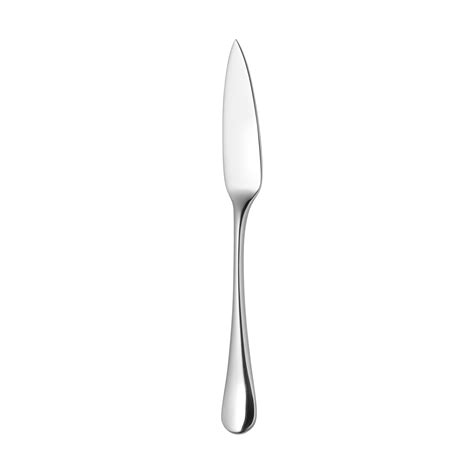Fiskkniv: The Ultimate Guide to Choosing and Using the Perfect Fish Knife

Fiskkniv: The Ultimate Guide to Choosing and Using the Perfect Fish Knife
Introduction
Are you an avid angler yearning for the perfect tool to fillet your prized catches? Look no further than the fiskkniv, an indispensable kitchen companion for any fish enthusiast. In this comprehensive guide, we will delve into the intricacies of choosing and using the ideal fish knife, ensuring you effortlessly transform your fish into culinary masterpieces.
Types of Fiskkniv
### 1. Flexible Fillet Knife:
With its slender, flexible blade, this knife excels at filleting delicate fish with soft flesh, allowing for precise cuts and minimal waste.
### 2. Stiff Fillet Knife:
Its rigid blade provides stability for filleting larger, firmer fish. The straight edge enables clean and even cuts, making it ideal for processing thicker fillets.
### 3. Serrated Fillet Knife:
Its serrated blade effortlessly cuts through tough skin and scales, making it suitable for filleting fish with tougher exteriors.
Choosing the Right Fiskkniv
Blade Material:
Quality fiskknives are typically made from high-carbon stainless steel or ceramic. Stainless steel offers durability and corrosion resistance, while ceramic provides exceptional sharpness and edge retention.
Blade Length:
Select a blade length appropriate for the size of the fish you typically fillet. For small to medium-sized fish, a blade length of 5-7 inches is suitable, while larger fish require a blade length of 7-9 inches or more.
Handle:
Choose a handle that provides a secure and comfortable grip. Ergonomic handles reduce fatigue and enhance control, particularly during prolonged use.
Using a Fiskkniv
Safety First:
Always handle a fiskkniv with care and caution. Keep it sharp and store it properly to prevent accidents.
Filleting Techniques:
Begin by scaling and gutting the fish. Then, using your chosen fiskkniv technique, carefully cut along the backbone to separate the fillets. For detailed filleting instructions, refer to online tutorials or consult with experienced anglers.
Maintenance and Care
### Cleaning:
Clean your fiskkniv immediately after use with warm, soapy water. Avoid using harsh detergents or abrasive sponges that can damage the blade.
### Sharpening:
Regularly sharpen your fiskkniv using a whetstone or honing steel to maintain its cutting edge. This ensures effortless filleting and reduces the risk of accidents.
### Storage:
Store your fiskkniv in a dry, protected location away from moisture. Consider using a knife block or sheath to prevent damage and preserve its longevity.
Interesting Story Cases
### The Fishermans Tale:
An experienced fisherman shared his secret for pristine fish fillets. He used a flexible fiskkniv to gently glide along the backbone, resulting in smooth, boneless fillets every time.
### The Newbies Triumph:
A novice angler initially struggled to fillet a fish, but after receiving guidance on choosing the right fiskkniv and proper techniques, she successfully produced perfectly filleted fish for her family meal.
### The Humorous Mishap:
One clumsy cook accidentally used a fiskkniv to cut vegetables. The rigid blade shattered the carrots into tiny pieces, providing a much-needed laugh amidst the cooking chaos.
Conclusion
The fiskkniv is a versatile tool that transforms the filleting process into an enjoyable and efficient task. By choosing the right type of knife, using proper techniques, and practicing regular maintenance, you can achieve culinary triumphs with your freshly caught fish. May your fiskkniv guide you towards countless delicious meals and memorable fishing adventures.
